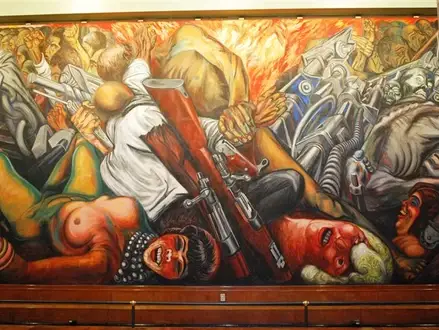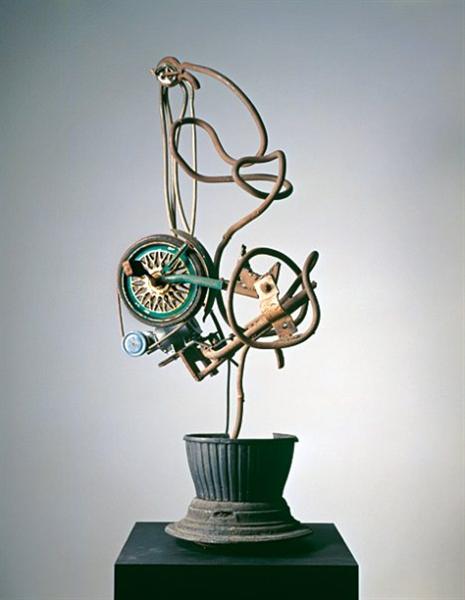Title of Artwork: “Catharsis”

Artwork by Jose Clemente Orozco
Year Created 1934
Summary of Catharsis
Palace of Fine Art in Mexico City houses Catharsis (1934), a large mural depicting a cathartic experience. A dystopian vision of humanity is depicted there by Orozco, which is riddled with conflict, decay and destruction. It is in this context that he depicts an industrialised and war-ravaged world, with protesters, men in combat, and piles of cogs, weapons, and machinery as the backdrop. On her back, provocatively, a laughing prostitute lies to the left of the mural’s centre. Disembodied heads of other prostituted women, their grimacing faces painted with garish makeup, are also included by Orozco in the background.
All About Catharsis
Including prostitutes in a public commission for a prominent cultural institution reflects Catharsis’ multiple layers of social and political critique. As a motif in European avant-garde literature and art, the prostituted woman represents the female body as both a commodity and an object of male desire. Modernity and industrialization’s temporal nature and commodified social relations were represented by the motif. According to some of Orozco’s preparatory sketches, where the prostitute’s head is depicted as though it were a bag of coins, this interpretation makes sense.
It was Catharsis, Orozco’s first public fresco after a seven-year sojourn in the United States, that showcased the artist’s artistic growth. As a result of his time living in New York City, the artist drew inspiration from the city’s skyscrapers, as evidenced by the mural’s collapsed steel girder. The German expressionist film Metropolis (1927) by Fritz Lang, which Orozco saw while living in New York, has been cited as another source of inspiration for Catharsis. While Catharsis and Metropolis both depict dystopian modernity rife with technological anxiety and social upheaval, Lang’s film has a distinct aesthetic and thematic identity all its own. Catharsis, unlike Lang’s film, does not offer a solution to the conflict between capital and labour. While Orozco is sceptical of technological advances and mass mobilisation, he demonstrates this in his writing.
The prostituted woman may have been inspired by Metropolis’ robot Maria. A robotic Maria uses her sexuality to inspire an uprising and is later burned at the stake by the same masses in this film.. So Maria is also a symbol of the rioting crowd. As a result, the prostituted woman in Catharsis can be seen as a symbol of Mexico’s ten-year revolution, which the artist witnessed and documented firsthand. This figure of a prostituted woman is a defiled symbol of corruption because Orozco was deeply critical of the new political regime in Mexico following the revolution. Political satirists in opposition papers frequently used the administration’s social and economic ties to ‘high-class prostitutes’ to expose their misconduct and corruption. For Orozco, the mural was an opportunity to expose the government’s hypocrisy in front of a national audience in a public place.
Information Citations
En.wikipedia.org, https://en.wikipedia.org/.























